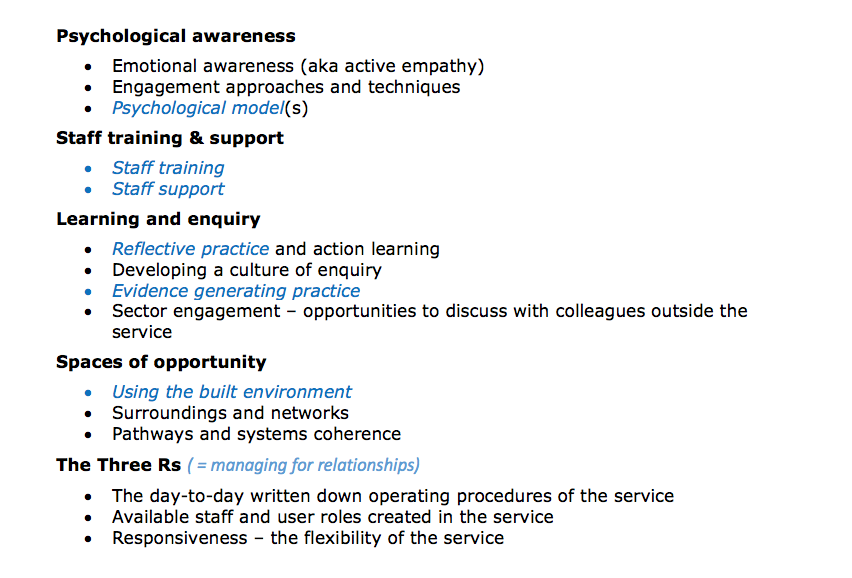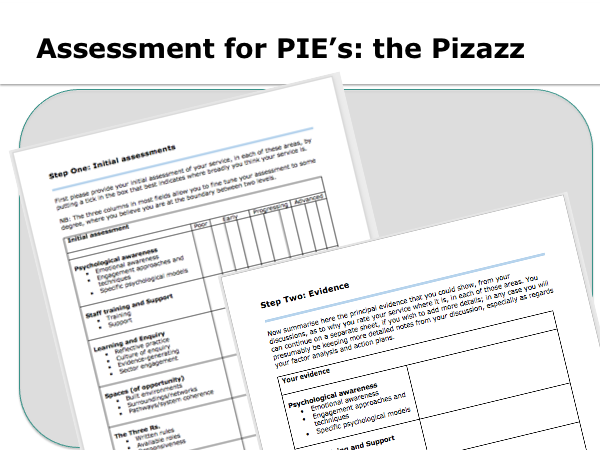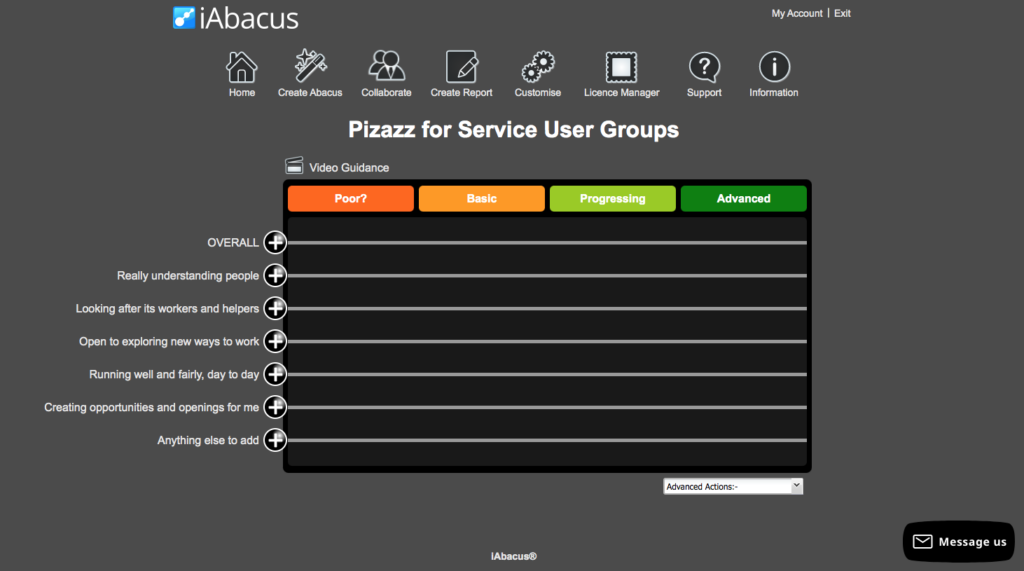It is hard to spell out fully and clearly the potential for system change in the PIE Abacus, because it is precisely that : potential.
We have only begun to glimpse the possibilities that the software version of the Pizazz offers us. But key to this are two features of the PIEs 2.0 framework:
Firstly, the ambition in PIEs 2.0 was to find a single framework of ideas and practice that, suitably customised, could be used by any services working constructively with complex needs, whatever their role or client group.

Secondly, the inclusion in PIEs 2 of ‘pathways and system coherence’ amongst the ‘Spaces of Opportunity’ theme allows – even encourages – services to ask how far these are helpful to their service and its users; and what needs more work.

The Pizazz process takes this further, introducing a more structured analysis of the factors that help and hinder any service – external as well as internal to the service itself – and asking what action the service might then take, to address what needs improving.

When we then add to this the capacity in the PIE Abacus to share and pool experiences between services, we then have a tool for exploring more systematically, as data, the felt pressures in the system.
We also have the positive suggestions made by Abacus users in their actions plans as to what they themselves might be able to do, or to offer, to address those gaps and barriers.
Finally, by ‘Abacus users’ we mean not just the staff of these services. It is equally possible to have one or more Abacuses specifically worded to gather the views and experiences of services’ users; or of any other community groups or interested parties.

How this all might work in practice is something we have only just begun to explore. We do already have a number of videos starting to tease out this potential. But we can only explore this together.
(NB: This page now needs further images and links)